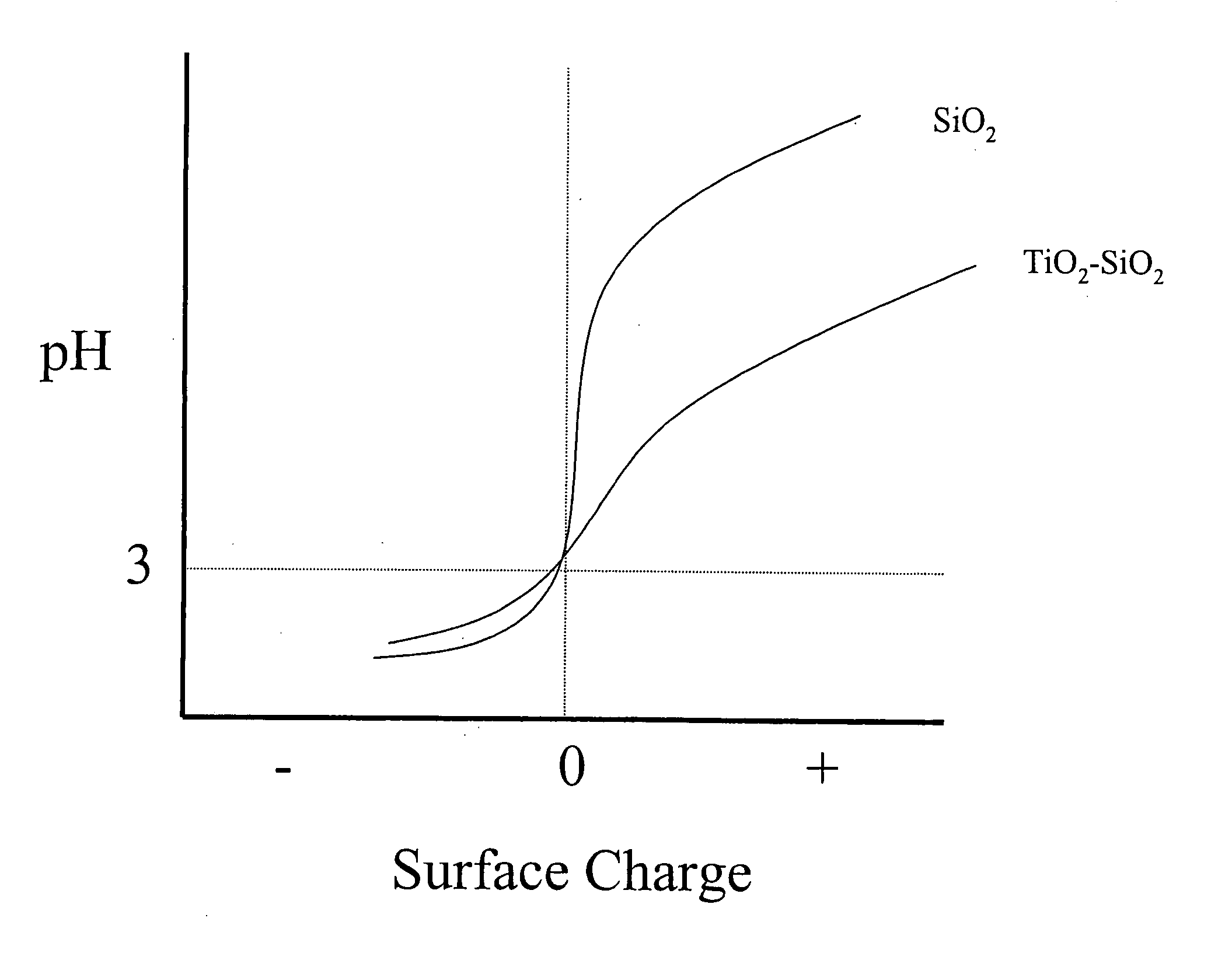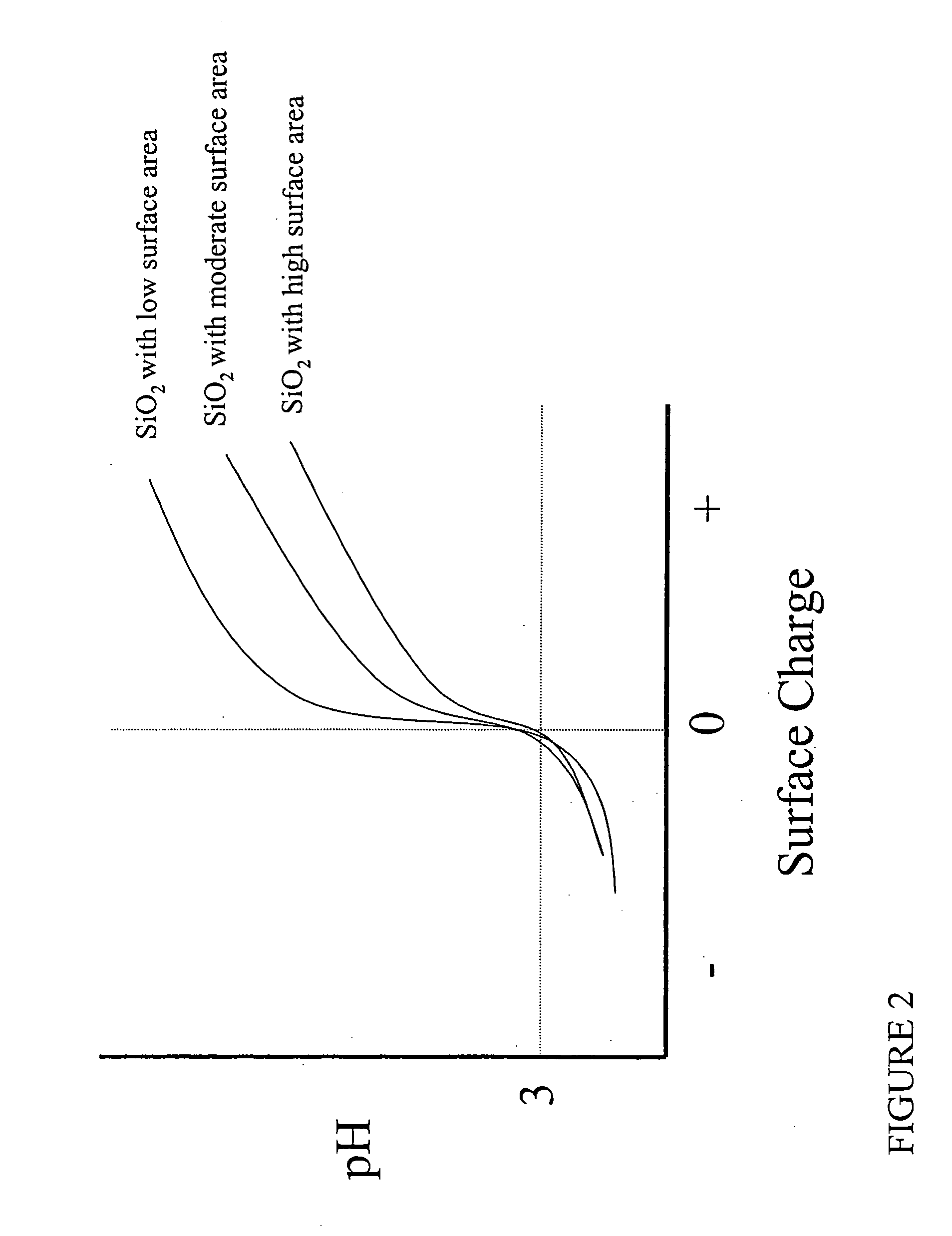Method using multi-component colloidal abrasives for CMP processing of semiconductor and optical materials
- Summary
- Abstract
- Description
- Claims
- Application Information
AI Technical Summary
Benefits of technology
Problems solved by technology
Method used
Image
Examples
Embodiment Construction
[0022] Dispersion of particles in acidic environments is of specific interest to the semiconductor industry for chemical-mechanical planarization (CMP), where slurry formulations are typically adjusted to pH .about.2-7 for the planarization of metal interconnecting layers. ("Chemical Mechanical Planarization of Microelectronic Materials," J. M. Steigerwald, S. P. Murarka, R. L. Gutmann, John Wiley and Sons, 1997; C. J. Brinker, J. Non-Crystalline Solids, 100 (1988) 31; L. M. Cook, J. Non-Crystalline Solids, 120 (1990) 152.) Traditionally for CMP processing, a stable dispersion of colloidal silica particles was difficult to obtain at acidic pH values. Most often, the colloidal particles agglomerated, with an associated degradation in their efficiency as fine abrasives. To overcome this problem, various approaches have been proposed. Some, for instance in EP-A-1048617, have suggested using mixed-oxide particles consisting of two molecular species SiO.sub.2 and Al.sub.2O.sub.3. Others,...
PUM
 Login to View More
Login to View More Abstract
Description
Claims
Application Information
 Login to View More
Login to View More - R&D
- Intellectual Property
- Life Sciences
- Materials
- Tech Scout
- Unparalleled Data Quality
- Higher Quality Content
- 60% Fewer Hallucinations
Browse by: Latest US Patents, China's latest patents, Technical Efficacy Thesaurus, Application Domain, Technology Topic, Popular Technical Reports.
© 2025 PatSnap. All rights reserved.Legal|Privacy policy|Modern Slavery Act Transparency Statement|Sitemap|About US| Contact US: help@patsnap.com



